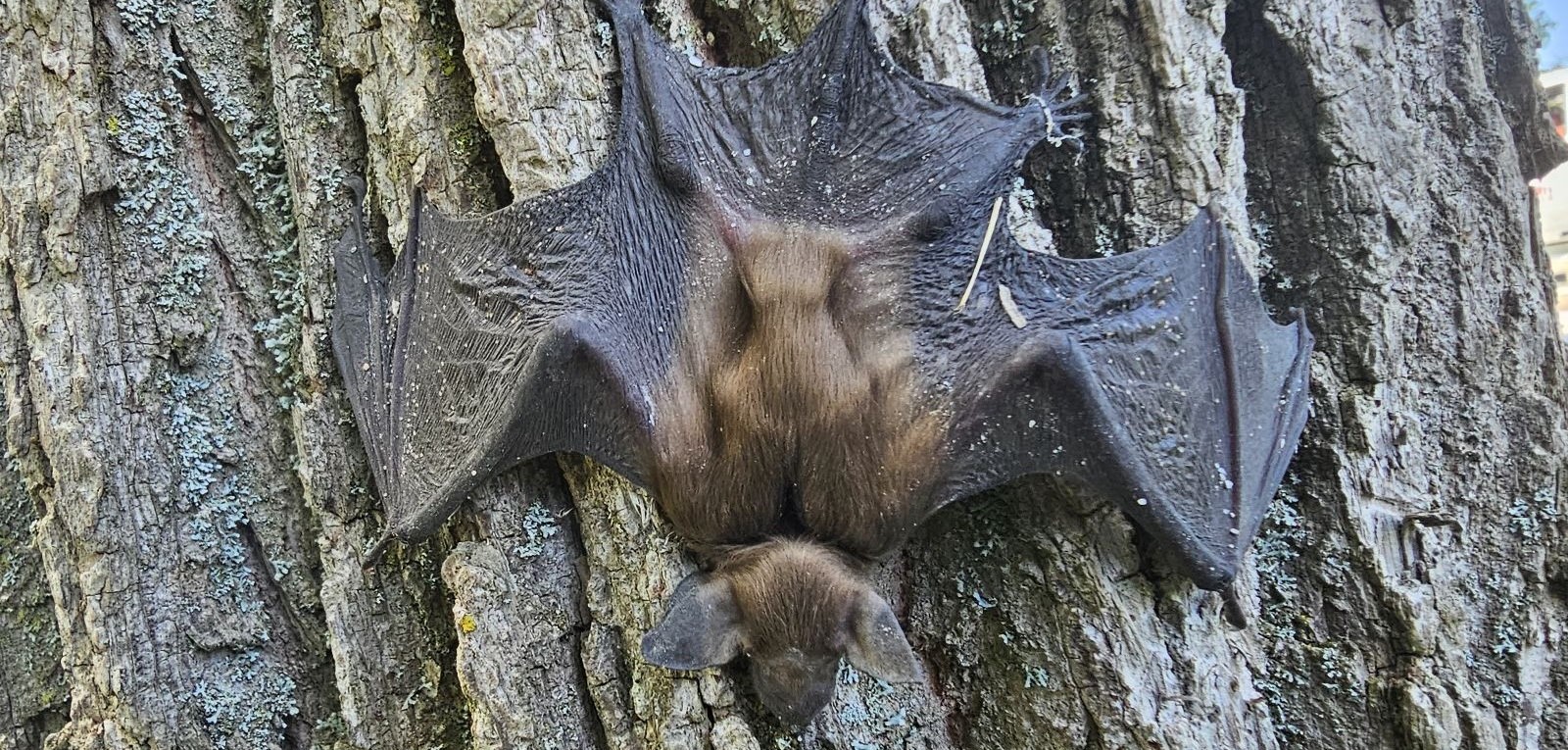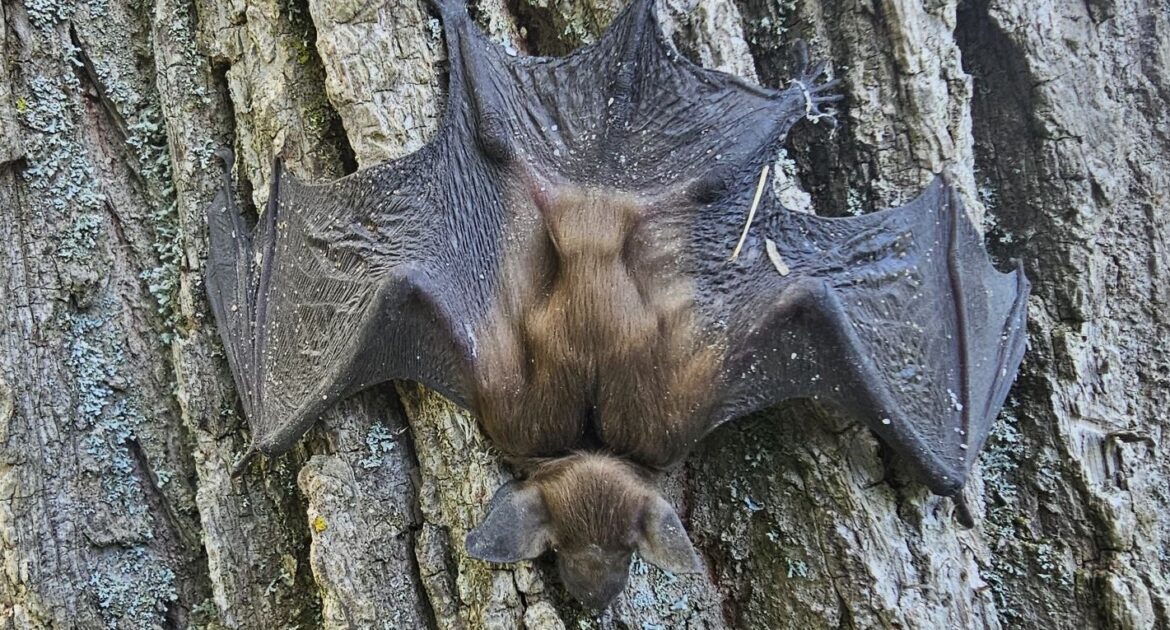Bats are essential creatures in our ecosystem, playing a vital role in controlling insect populations and aiding in pollination. However, these remarkable animals are currently facing a significant threat known as White-Nose Syndrome (WNS). Homeowners may be wondering what causes white nose syndrome in bats and how it affects them.
In this comprehensive guide, we’ll explore these questions and provide insights into humane bat removal. We aim to give you the knowledge needed to understand this issue and explain why Skedaddle is the preferred choice for solving wildlife control concerns.
Understanding The Fungal Disease
White-Nose Syndrome is a fungal disease that has devastated bat populations across North America. This disease primarily affects hibernating bats, and it’s caused by the fungus Pseudogymnoascus destructans. This fungus thrives in cold, damp environments such as caves and mines, which are common hibernation sites. The disease gets its name from the white fungal growth that appears on the noses, ears, and wings of infected bats.
The fungus disrupts the hibernation cycle by causing bats to wake up more frequently during their rest period. This increased activity depletes their energy reserves, leading to starvation before they can feed again in the spring. Consequently, White-Nose Syndrome has resulted in the deaths of millions of bats, significantly impacting their populations. Understanding the root cause of this syndrome is crucial for implementing strategies to control its spread and protect these valuable creatures.
In addition to disrupting the hibernation cycle, White-Nose Syndrome weakens the immune system, making them more susceptible to other diseases. This further complicates efforts to manage the syndrome and underlines the necessity of addressing it through informed practices. The impact on bat populations is not only an ecological concern but also a pressing matter for those involved in wildlife conservation.
What Does White Nose Syndrome Do to Bats?
White-Nose Syndrome poses a severe threat, leading to both immediate and long-term effects on their populations. For homeowners curious about what White-Nose Syndrome does to bats, it’s crucial to understand the broader implications of this disease on these animals and their ecosystems.
One of the most direct consequences of White-Nose Syndrome is the alarming decline in bat populations. Many species are already threatened due to habitat loss and other environmental pressures, and the introduction of this disease has exacerbated these challenges. The loss of bats can disrupt local ecosystems, as they play a critical role in controlling insect populations, including mosquitoes and agricultural pests.
Furthermore, the decline in bat numbers can lead to increased pest populations, which may affect crops and human health. Bats consume large quantities of insects, and their absence can lead to higher numbers of pests, resulting in more damage to plants and a greater need for chemical pest controls. This has economic implications for agriculture and increases the potential for pests to spread diseases to humans and animals.
White-Nose Syndrome also poses a significant challenge for bat conservation efforts. The rapid spread of the disease and its devastating effects have made it difficult for conservationists to develop effective strategies to protect and restore bat populations. Efforts are underway to understand the disease better, prevent its spread, and support the recovery of affected bat species. However, much work remains to be done to mitigate the impact of this disease fully.
Addressing the Challenges of Bat Control
For homeowners dealing with bat-related issues, it’s essential to consider humane bat removal as a responsible approach to managing these animals. Bats are protected under various wildlife laws, and removing them requires expertise to ensure compliance with regulations and the well-being of the animals.
When dealing with bats in residential areas, it’s important to identify and address potential entry points that these animals may use to access buildings. Sealing these entry points is a critical step in preventing future infestations. This process should be done with care and precision to avoid trapping bats inside, especially during maternity season when young bats are unable to fly.
Humane eviction techniques are employed to encourage bats to leave without harming them. These methods may include the use of one-way doors or other exclusion devices that allow bats to exit but prevent re-entry. It’s essential to conduct these activities at the appropriate time of year to minimize disruption to bat populations and ensure compliance with legal requirements.
Once bats have been successfully evicted, it’s crucial to clean and sanitize the affected areas to remove any guano or other debris. This step helps prevent health risks associated with bat droppings and restores the cleanliness of the property. Professionals equipped with the proper tools and protective gear can efficiently handle this task, ensuring a safe environment for homeowners and their families.
Why Choose Skedaddle for Wildlife Control
At Skedaddle, we understand the importance of using humane methods when it comes to managing bats and other wildlife concerns. Our team of experts is dedicated to providing effective, ethical solutions that prioritize the safety and well-being of both homeowners and animals. By choosing Skedaddle for your wildlife control needs, you benefit from our extensive knowledge and experience.
Our approach is rooted in scientific understanding and best practices for wildlife management. We conduct thorough inspections to identify the specific challenges facing your property and develop tailored strategies to address them. Our methods are designed to minimize stress and harm to animals while ensuring effective and long-lasting results.
Skedaddle’s commitment to humane solutions extends beyond just removal. We educate homeowners about the benefits of bats and other wildlife, promoting coexistence where possible. By fostering awareness and understanding, we help create communities that value and protect their local ecosystems.
Taking Action Against White-Nose Syndrome
Combating White-Nose Syndrome requires a collective effort from individuals, organizations, and governments. Homeowners can play a role in supporting bat conservation by implementing measures that protect and encourage bat populations. This may include installing bat houses to provide alternative roosting sites and participating in citizen science initiatives that track bat populations and the spread of White-Nose Syndrome.
Educating others about the importance of bats and the challenges they face is another crucial step. By raising awareness and fostering appreciation for these animals, we can build support for conservation efforts and drive meaningful change. Engaging with local wildlife groups and supporting research initiatives are ways individuals can contribute to the protection of bats.
Finally, taking action within your community can make a significant difference. Advocating for bat-friendly policies and practices, supporting conservation organizations, and participating in volunteer activities are all ways to support bat populations and combat the impact of White-Nose Syndrome. By working together, we can help ensure a future where bats thrive and continue to play their essential roles within our ecosystems.
Humane Bat Removal
White-Nose Syndrome presents a formidable challenge to bats and the ecosystems they support. Understanding what causes white-nose syndrome in bats and its effects is crucial for taking informed action to address this issue. By choosing humane bat removal strategies and supporting conservation efforts, homeowners can play an active role in protecting these valuable animals.
At Skedaddle, we are committed to providing humane solutions and promoting awareness about the importance of wildlife conservation. If you’re facing bat-related concerns, we invite you to reach out to us for expert guidance and support. Together, we can work towards a future where bats and humans coexist harmoniously, ensuring the health and balance of our shared environment.




